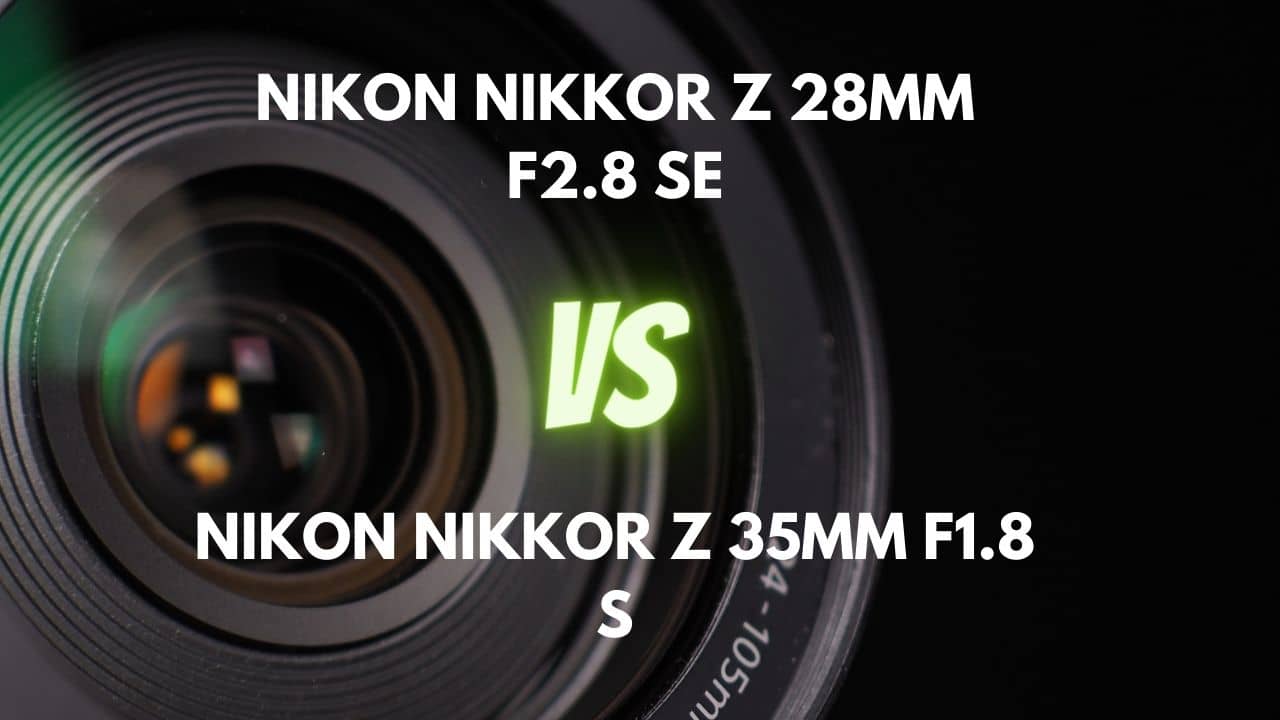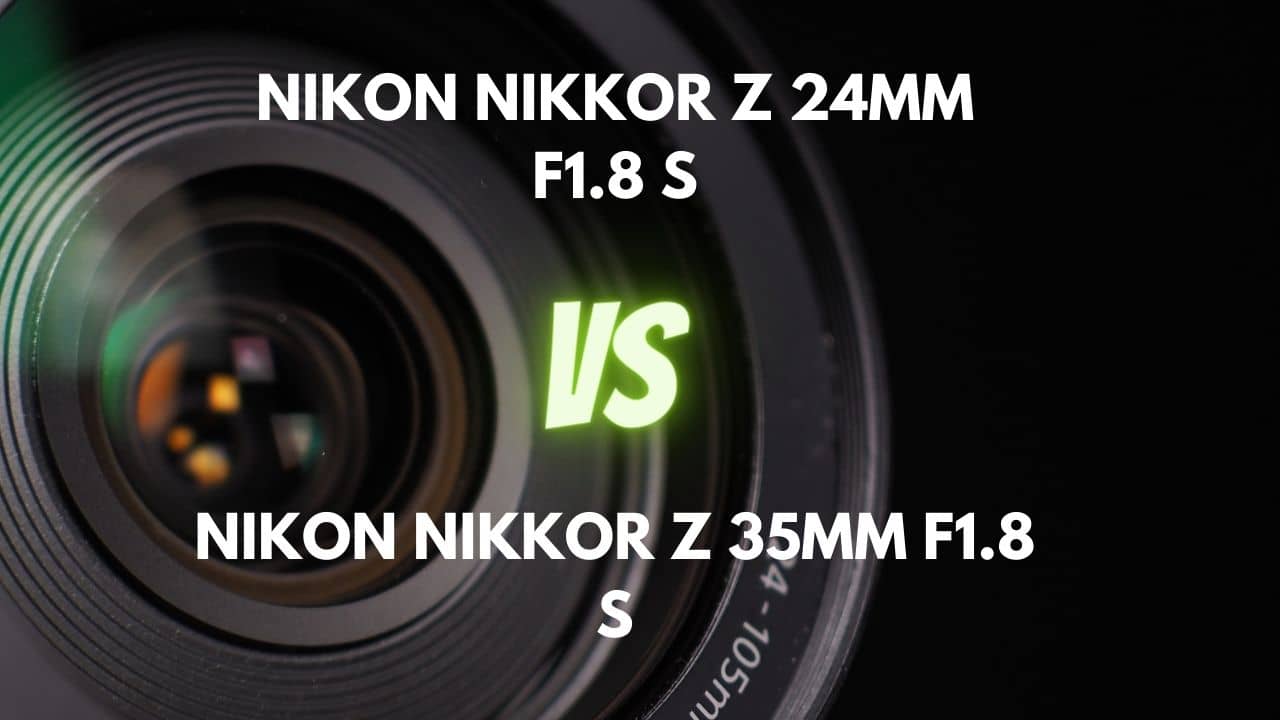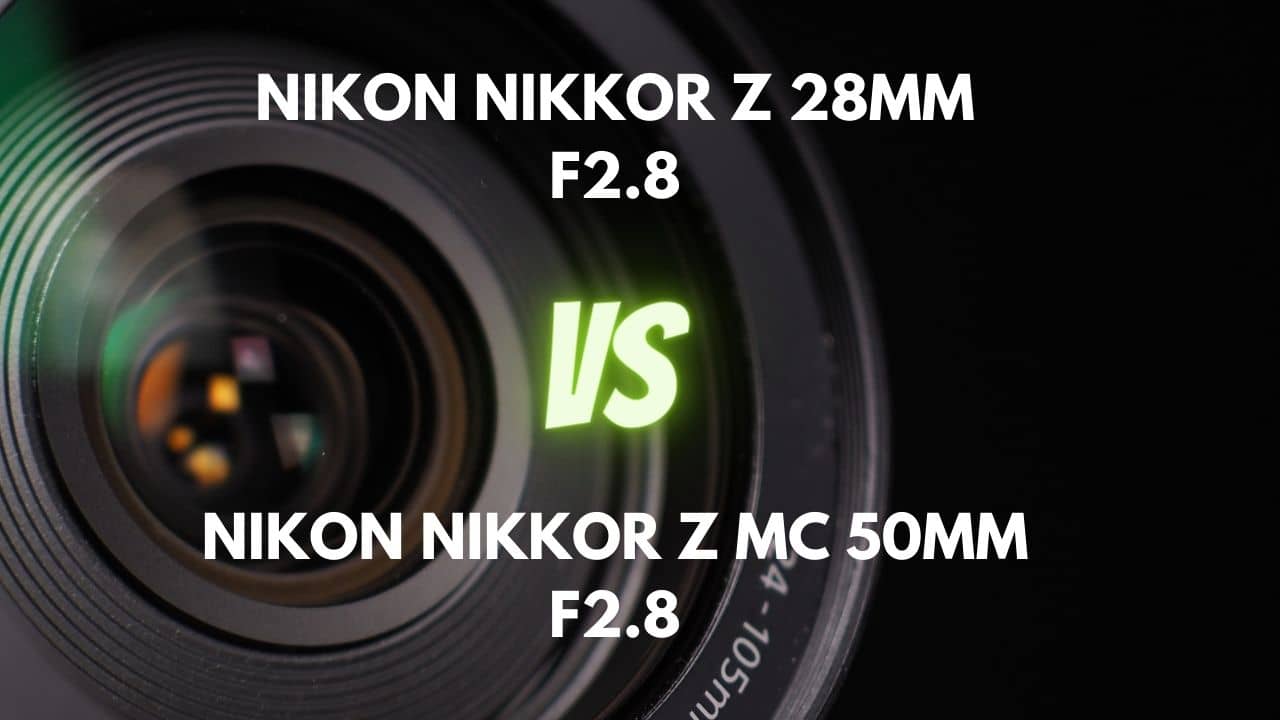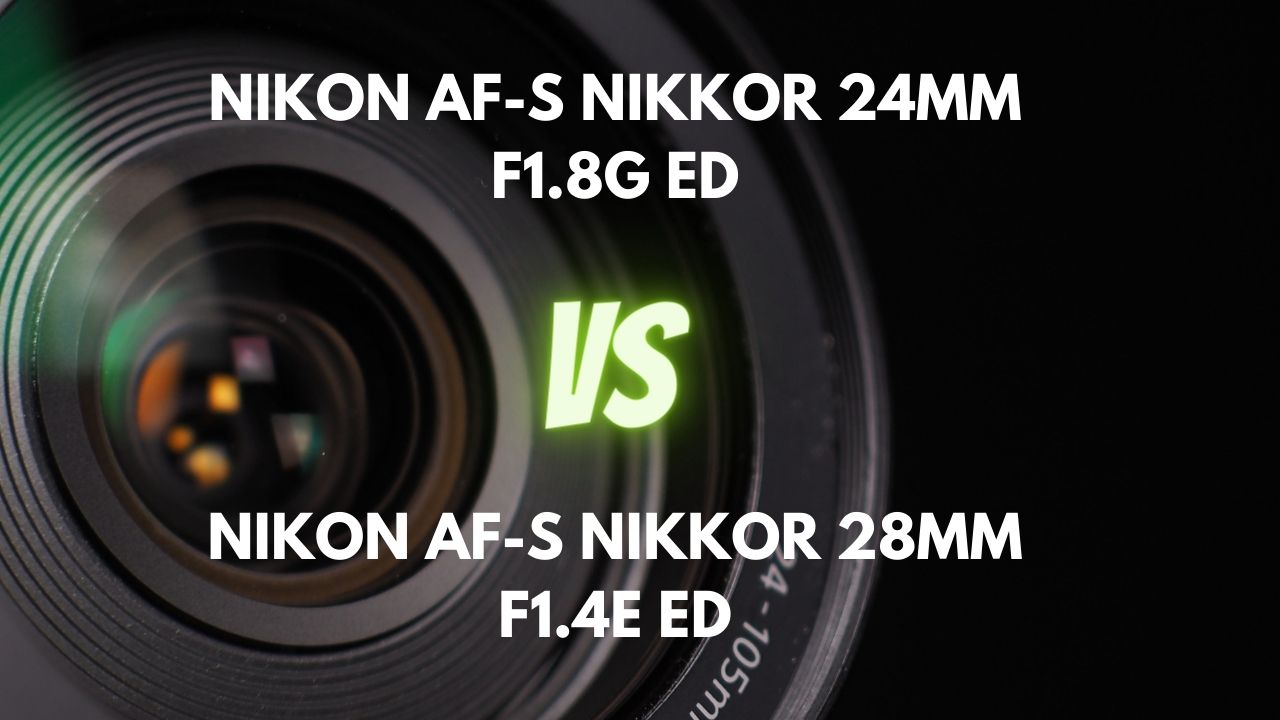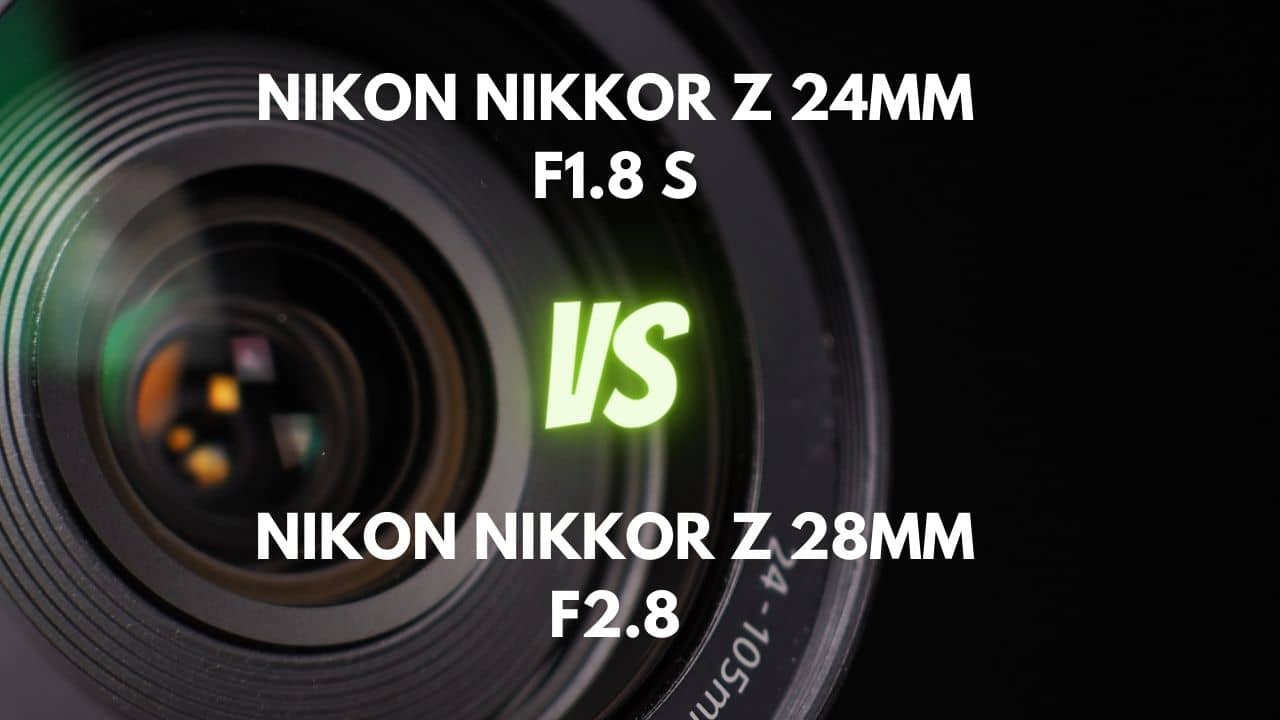Are you in search of the perfect wide-angle zoom lens for your photography adventures? Look no further, as we dive deep into the world of Nikon 17-35mm f/2.8 and the Tamron 17-35mm f/2.8-4 to compare two exceptional lenses that cater to a variety of photography styles.
Whether you’re capturing breathtaking landscapes, stunning architectural masterpieces, or intimate environmental portraits, our detailed comparison of the Nikon and Tamron wide-angle lenses will provide you with valuable insights to make an informed decision.
We will explore factors such as build quality, weather sealing, focusing performance, image sharpness, bokeh quality, and more, to ensure you have all the information needed to choose the lens that best suits your needs.
So grab a cup of your favorite beverage, sit back, and let us guide you on this journey to discover the advantages and trade-offs between these two remarkable lenses, helping you unleash your full creative potential.
Overview
| Nikon AF-S NIKKOR 17-35mm F2.8D IF-ED | Tamron 17-35mm F2.8-4 Di OSD Nikon F (FX) | |
|---|---|---|
| Max Aperture | F2.8 | F2.8-4 |
| Aperture Type | Fixed | Variable |
| Focal Range (mm) | 17-35 | 17-35 |
| Mount Type | Nikon F (FX) | Nikon F (FX) |
| Zoom Ratio (X) | 2.1 | 2.1 |
Comparing the Nikon 17-35mm f/2.8 and the Tamron 17-35mm f/2.8-4, both have a focal range of 17-35mm and are designed for Nikon F (FX) mounts.
The Nikon lens has a fixed maximum aperture of f/2.8, while the Tamron lens features a variable maximum aperture of f/2.8-4. A fixed aperture can provide better low light performance, consistent image quality, and a more robust build quality. However, it often comes with a higher price tag. On the other hand, a variable aperture lens is generally more affordable and lightweight but may exhibit reduced image quality and low light performance.
In the context of wide-angle photography, having a larger aperture isn’t always crucial, as landscape and architectural photography often require deeper depth of field. However, a larger aperture can benefit photographers shooting in low light conditions or those aiming for creative effects, such as subject isolation and background blur.
In summary, the Nikon lens is likely to provide better low light performance, more consistent image quality, and a more robust build, while the Tamron lens offers a more budget-friendly and lightweight option with some compromises in image quality and low light performance.
Design and Ease of Use
| Nikon AF-S NIKKOR 17-35mm F2.8D IF-ED | Tamron 17-35mm F2.8-4 Di OSD Nikon F (FX) | |
|---|---|---|
| Diameter x Length (mm) | ⌀82.5×106mm | ⌀84×93mm |
| Weight (gr) | 745 | 460 |
| Filter Thread (mm) | 77 | 77 |
| Weather Sealing | No | Yes |
| Zoom Method | Rotary (internal) | Rotary (extending) |
| Distance Scale | Yes | No |
| DoF Scale | No | No |
| Hood Supplied | Yes | Yes |
The Nikon 17-35mm f/2.8 has dimensions of ⌀82.5x106mm and weighs 745 grams. It features an internal rotary zoom method, which means that the lens doesn’t change its physical size when zooming in or out. This design contributes to better weather sealing and consistent balance while shooting, although it can result in a more complex and heavier lens.
On the other hand, the Tamron 17-35mm f/2.8-4 measures ⌀84x93mm and weighs 460 grams, making it more compact and lightweight compared to the Nikon lens. It uses an extending rotary zoom method, which causes the lens to physically extend while zooming. This design is typically simpler and lighter, but it can make the lens more difficult to handle and less resistant to dust and moisture.
In conclusion, the superior lens depends on your specific needs and preferences. If you prioritize weather sealing, consistent balance, and compactness regardless of the zoom level, the Nikon lens with its internal rotary zoom design would be the better choice. However, if you value a more compact and lightweight lens that is easier to carry and store, the Tamron lens with its extending rotary zoom design may be the more suitable option.
Lens Mount and Barrel
The Nikon 17-35mm f/2.8 features a metal lens mount with a plastic bayonet, lacking a rubber gasket to resist moisture and dust. Its lens barrel is constructed from metal with a semi-matte black sputtered epoxy paint finish, offering a premium and professional feel. Thanks to its internal focusing design, the physical size of the lens remains constant during zooming.
On the other hand, the Tamron 17-35mm f/2.8-4 has a metal lens mount with a rubber gasket for protection against moisture and dust. Its lens barrel is made of quality plastic, resulting in a lighter, more portable, and budget-friendly option.
The lens barrel has a smooth shape and comfortable grip, with a well-designed bevel, rubber basket joined with a metal ring, and a smooth black casing featuring a white marking point on the front. The lens changes its physical size slightly when zooming, extending a few millimeters from 17mm to 35mm, without significantly affecting the balance.
Comparing the two lenses, the Nikon lens has a more robust and durable build with its metal lens barrel, although it lacks the rubber gasket found in the Tamron lens. The Tamron lens, with its plastic lens barrel, offers a more lightweight and affordable option, while still providing adequate protection against moisture and dust.
If durability and a professional feel are more important, the Nikon lens would be the better choice. However, if portability, affordability, and protection against the elements are your main concerns, the Tamron lens may be the more suitable option.
Weather Sealing
The Nikon 17-35mm f/2.8 lacks weather sealing, which means it doesn’t have any gaskets at the lens mount or internal seals at the rings, switches, and front of the barrel. This makes it more susceptible to damage from dust, moisture, and light water splashes, and may require extra care when shooting outdoors or in challenging environments.
In contrast, the Tamron 17-35mm f/2.8-4 is weather-sealed, featuring seals at the lens mount area and other critical locations to prevent moisture and raindrops from infiltrating the lens. This provides an additional layer of protection when shooting outdoors under adverse weather conditions.
The Tamron lens also has a rubber gasket on the rear lens cap to keep dust and dirt from entering the camera body. Furthermore, the front element of the lens features a fluorine coating, which repels water and oil, and helps protect it from dust, dirt, and fingerprints.
In conclusion, the Tamron lens offers superior weather sealing compared to the Nikon lens. This added protection makes it a more suitable choice for photographers who frequently shoot in harsh conditions or require a lens that can withstand various weather challenges. The Tamron lens provides better durability, performance, and peace of mind when shooting outdoors, ensuring your investment is well-protected.
Rings
The Nikon 17-35mm f/2.8 features 2 well-designed control rings, the zoom ring and the focus ring, both of which operate smoothly. The zoom ring is well spread out along the lens barrel, allowing for precise framing, while the focus ring turns continuously without any play, making manual focusing easy.
Both rings have ergonomically beveled edges, providing a comfortable grip and smooth operation. Additionally, the Nikon lens has no zoom creep and includes a windowed distance scale, enhancing its usability.
On the other hand, the Tamron 17-35mm f/2.8-4 also has 2 rings – a rubber-rib-covered zoom ring and a manual focus ring. Both rings have good bevels and are well-positioned, with the zoom ring located closest to the camera body.
The zoom ring is about 24mm wide, with focal length markings at 17mm, 20mm, 24mm, 28mm, and 35mm, and turns smoothly with good resistance. The focus ring, located at the front, has a comfortable rotation amount but offers light resistance, making manual focusing slightly challenging. The Tamron lens lacks a distance scale and depth-of-field indicator.
In conclusion, the Nikon lens offers superior ring design and functionality when compared to the Tamron lens. The smooth operation, continuous focus ring, and windowed distance scale provide better precision and control, making it more user-friendly and better suited for photographers who require precise adjustments during shooting.
While the Tamron lens has some great features, the Nikon lens excels in providing a more satisfying overall experience when it comes to ring ergonomics and control.
Switches/Buttons
The Nikon 17-35mm f/2.8 features an AF/MF switch labeled as “M/A – M”, with the “M/A” position indicating autofocus while still allowing for manual focus adjustments without the need to switch the lens to manual focus mode. This design simplifies the lens operation and offers greater flexibility when switching between focus modes. However, the Nikon lens does not have any other switches or buttons.
In contrast, the Tamron 17-35mm f/2.8-4 has a single switch that controls the AF/MF mode. This switch is conveniently located on a low-profile switch bank, making it easily accessible during shooting. The switch is raised to an ideal amount for easy use and provides a satisfying click when changing positions, ensuring a secure and positive mode change.
In conclusion, both lenses offer simple and effective switch designs for controlling the AF/MF mode. However, the Tamron lens has a slight edge over the Nikon lens in terms of switch design, thanks to its convenient placement on a low-profile switch bank and the tactile feedback it provides when changing positions.
While the Nikon lens’s “M/A – M” switch offers the advantage of manual focus adjustments without switching to manual focus mode, the Tamron lens’s switch design ultimately provides a more user-friendly experience during operation.
Filter Thread
The Nikon 17-35mm f/2.8 has a metal 77mm filter thread, which is versatile and commonly used. The front element and filter thread do not rotate during focus, making it easy to use with various filters, including the Hoya multicoated HD3 UV filter, which repels dirt and fingerprints. This lens is compatible with standard filters and provides a convenient experience when using filters.
On the other hand, the Tamron 17-35mm f/2.8-4features a 77mm filter thread, a de facto standard shared with Nikon. This design allows the use of traditional filters, unlike the Tamron 15-30mm, which does not offer a filter thread on its bulbous front element.
The front element of the Tamron lens is slightly convex and surrounded by a non-rotating filter thread with a diameter of 77mm, ensuring easy alignment with a camera. Although the Tamron lens is easy to use with filters, using a standard thickness circular polarizer filter may increase peripheral shading. Therefore, it is recommended to use a slim model.
In conclusion, both lenses feature a 77mm filter thread, which is a widely used standard, making it easy to find compatible filters. The Nikon lens, with its metal construction, offers greater durability and compatibility with standard filters.
The Tamron lens also provides a user-friendly experience but may require a slim model of circular polarizer to prevent peripheral shading. Overall, both lenses have excellent filter thread designs, but the Nikon lens has a slight advantage due to its more robust metal construction and compatibility with a wider range of standard filters.
Lens Hood
The Nikon 17-35mm f/2.8 comes with a HB-23 plastic bayonet hood included in the package. The hood is made of plastic with a matte black sputtered epoxy paint finish over alloy. It features a simple beveled design without a scalloped shape. Although the hood cannot be smoothly rotated, it is easy to attach and detach from the lens.
In contrast, the Tamron 17-35mm f/2.8-4 includes a bayonet-style hood in the box. Made of high-quality, rigid, molded plastic, the hood has a petal shape with a ribbed interior that effectively reduces reflections from reaching the front lens element. This hood is relatively compact and can be smoothly rotated. The ergonomic bevel is designed to fit the lens perfectly.
Comparing the two lens hoods, the Tamron lens hood offers a more effective design with its petal shape and ribbed interior, which better prevents light reflections and maintains image contrast. The Tamron hood also provides a smoother rotation, making it more user-friendly. The Nikon lens hood, on the other hand, is easier to attach and detach but lacks the scalloped shape and ribbed interior.
In conclusion, the Tamron lens hood is superior due to its more effective design in reducing light reflections and its user-friendly rotation mechanism. Its petal shape and ribbed interior offer better protection and image quality compared to the Nikon lens hood.
Focusing and Optical Stabilization
| Nikon AF-S NIKKOR 17-35mm F2.8D IF-ED | Tamron 17-35mm F2.8-4 Di OSD Nikon F (FX) | |
|---|---|---|
| Autofocus | Yes | Yes |
| AF Motor | Silent Wave Motor | Optimized Silent Drive |
| Rotating Front Element | Does not rotate on focusing | Does not rotate on focusing |
| Min Focus Distance | 0.28m | 0.28m |
| Max Magnification (X) | 0.22 | 0.2 |
| Full-Time Manual Focus | Yes | Yes |
| Focus Method | Internal | Internal |
Focusing Performance
The Nikon 17-35mm f/2.8 boasts a Silent-Wave Drive autofocus system that operates near silently and very fast. It produces almost no noise when focusing, and the focusing speed is nearly instantaneous. The focus accuracy is excellent, and manual focus is easy and precise. The lens has an internally focusing design, so its length remains constant at all times. The manual focus action is smooth and continuous, and it features a manual focus override.
On the other hand, the Tamron 17-35mm f/2.8-4 has varying autofocus performance depending on the camera body it is mounted on. However, it generally focuses accurately and consistently. The autofocus motor is relatively quiet, but does make some noise when focusing. The focusing speed is generally adequate, but can be slow in certain situations, particularly in low-light conditions. The initial autofocus acquisition speed is reasonably fast, especially at the 35mm focal length.
The lens lacks a full-time manual override, and the manual focus action is not particularly smooth due to light rotational resistance. The lens does not feature an internally focusing design, so its length changes slightly when zooming and focusing. The front element does not rotate during focusing. Some users have noted focus breathing when focusing at close distances, and the lens has modest close-focusing capabilities.
Comparing the two lenses, the Nikon lens offers superior focusing performance with its near-silent and fast autofocus system, excellent focus accuracy, and smooth manual focus action. It also features an internally focusing design, which keeps the lens length constant, and a manual focus override for added convenience. The Tamron lens has adequate autofocus performance, but can struggle in low-light conditions, lacks a full-time manual override, and does not have an internally focusing design.
In conclusion, the Nikon lens has a clear advantage in focusing performance with its near-silent, fast autofocus system, smooth manual focus action, and internally focusing design. The Tamron lens, while still offering reasonable focusing performance, falls short compared to the Nikon lens in several aspects.
Optical Stabilization
Both the Nikon 17-35mm f/2.8 and the Tamron 17-35mm f/2.8-4 do not feature optical stabilization. While optical stabilization is not as essential for wide-angle lenses as it is for telephoto lenses, it can still be beneficial in certain situations, such as shooting in low-light conditions, at slower shutter speeds, or when recording video. In these cases, having some form of stabilization can help you achieve sharper images and smoother footage.
Many modern cameras now offer in-body image stabilization (IBIS), which can effectively work with wide-angle lenses to minimize the effects of camera shake, even if the lens itself doesn’t have built-in optical stabilization. If your camera has IBIS, the need for optical stabilization in a wide-angle lens might be even less critical.
Considering the common uses of wide-angle lenses, such as landscape and interior photography, a tripod is often a more effective tool for achieving stability and sharpness, making optical stabilization less of a priority. However, in environmental photography or other scenarios where handheld shooting is required, a fast lens with a larger aperture may provide a more cost-effective solution for capturing sharp images than relying solely on optical stabilization.
In conclusion, neither the Nikon lens nor the Tamron lens offers optical stabilization, making them equal in this aspect. However, depending on the type of photography you do and your camera’s features, such as in-body image stabilization, optical stabilization might not be a crucial factor in your lens choice. In such cases, other factors like camera support, faster lenses, or using a tripod can help you achieve sharp images without the need for optical stabilization.
Image Quality
| Nikon AF-S NIKKOR 17-35mm F2.8D IF-ED | Tamron 17-35mm F2.8-4 Di OSD Nikon F (FX) | |
|---|---|---|
| Special Elements | 3 ASPH | LD/GM elements, BBAR/fluorine coatings |
| Diaphragm Blades | 9 | 7 |
| Circular Aperture | Yes | Yes |
Aberration
The Nikon 17-35mm f/2.8 exhibits well-controlled chromatic aberration and minimal coma. At 17mm, coma appears as smeared blobs around bright points of light in the corners when the aperture is wide open, but it disappears by f/5.6.
On the other hand, the Tamron 17-35mm f/2.8-4 has a relatively low amount of lateral chromatic aberration, with only a moderate amount showing at 17mm and diminishing rapidly as the focal length increases. Longitudinal chromatic aberration is present but not especially pronounced, and it practically disappears when stopping down the aperture.
Coma is low in the Tamron lens, making it excellent for shooting the night sky. Spherical aberration is present but not bothersome, and stopping down 1 to 2 stops generally removes this aberration.
In conclusion, both lenses perform well in controlling aberrations, but the Tamron lens has a slight edge due to its lower coma, making it a better option for shooting the night sky. The Nikon lens still offers good control over chromatic aberration and coma, but the Tamron lens provides a more superior overall performance in terms of aberration control.
Sharpness
The Nikon 17-35mm f/2.8 is generally very sharp, even wide open. However, the corners struggle on large FX sensors at the short end of the zoom range. Stopping down considerably improves sharpness in the corners, producing very good results.
At 35mm, the lens is sharp even in the corners at f/2.8, but diffraction limits performance at f/16 and f/22. The lens is also super-sharp everywhere in the frame when stopped down to f/5.6 or longer focal lengths. The sharpest aperture varies depending on the focal length and aperture setting, but generally ranges from f/4 to f/8.
On the other hand, the Tamron 17-35mm f/2.8-4 is generally very sharp across the focal range, with excellent central sharpness from wide open apertures to stopped down. Corner sharpness varies depending on the focal length and aperture used, but generally improves significantly when stopped down. The sharpest aperture varies depending on the focal length, but typically falls around f/5.6. Diffraction starts to become noticeable around f/8 and f/11.
In conclusion, both lenses offer impressive sharpness, but the Nikon lens has a slight advantage, particularly at 35mm and when stopped down to f/5.6 or longer focal lengths. While the Tamron lens also delivers excellent sharpness, the Nikon lens consistently performs well across various focal lengths and aperture settings, making it the superior choice for sharpness.
Bokeh Quality
The Nikon 17-35mm f/2.8 creates fairly good and realistic bokeh, which is neutral to good at ordinary distances at 17mm stopped down. At closer than 2 feet at 35mm, the bokeh seems very neutral. While not specifically mentioned as “smooth and beautiful,” the overall impression is positive and in line with expectations for a professional-grade lens.
In contrast, the Tamron 17-35mm f/2.8-4 produces decent bokeh, with some examples appearing average or normal, and defocused highlights in some instances not being especially round. Bokeh does not impinge quite as much with wide-angle lenses, but when backgrounds are diffused, the appearance of out-of-focus areas is pleasant enough. The Tamron 17-35mm lens offers a pretty smooth interior of its bokeh balls, while the Nikon 18-35mm and Tokina lenses show more pronounced outlining in the center.
In conclusion, while bokeh quality is not a primary concern for wide-angle lenses, both lenses produce decent results. However, the Nikon lens offers a more consistent and neutral bokeh quality, making it a slightly better choice for those looking to achieve pleasing out-of-focus backgrounds in their wide-angle photography.
Flare/Ghosting
The Nikon 17-35mm f/2.8 boasts excellent resistance to flare and ghosting, thanks to its use of aspherical elements. It performs as well as or even better than fixed ultra-wide lenses in this regard. Even shooting directly into the sun is not a problem, and any visible magenta spots in the viewfinder can easily be blocked out with your hand. The included plastic bayonet hood further helps reduce any potential flare or ghosting.
On the other hand, the Tamron 17-35mm f/2.8-4 features an advanced BBAR coating that effectively combats flare and ghosting, resulting in very few flare effects even at narrow apertures across the entire focal length range.
Additionally, the lens has a high level of backlighting control, crucial for wide-angle lenses subjected to strong light sources. When shooting against a strong light source, the lens is clear of flare and glare artifacts at the short end and performs decently at the long end as well.
In conclusion, both lenses demonstrate impressive performance in terms of flare and ghosting control. However, the Nikon lens slightly edges out the Tamron lens in this aspect, with its excellent resistance to flare and ghosting even when shooting directly into the sun.
Vignetting
The Nikon 17-35mm f/2.8 exhibits some pronounced vignetting, especially at the wide end of the zoom range. However, stopping down can reduce it to less disturbing levels. At 17mm, some minor vignetting may still be visible at f/2.8. It’s worth noting that the vignetting analysis was based on uncorrected JPEGs straight from the camera. The lens also performs well with filters and shows no vignetting on DX cameras.
In contrast, the Tamron 17-35mm f/2.8-4 displays noticeable vignetting, particularly at wider apertures and focal lengths. At 20mm, vignetting starts at -2.2 stops at f/2.8 and gradually reduces to around -0.9 stops at f/16. Meanwhile, 35mm shows the least vignetting, with -1.2 stops from f/4 to f/11 and -1.1 stops thereafter. The heavy vignetting somewhat obscures the edge sharpness but can be corrected in post-processing. Overall, vignetting is one of the major optical shortcomings of this lens.
In conclusion, while both lenses exhibit vignetting, the Nikon lens performs better in this aspect, especially when stopping down and using filters. The Tamron lens, on the other hand, has more pronounced vignetting issues that may require post-processing to correct. Therefore, the Nikon lens is the superior choice in terms of vignetting control.
Distortion
The Nikon 17-35mm f/2.8 displays some distortion, particularly at the 17mm end, where there is barrel distortion. However, it is not a major problem and is, in fact, better than other lenses in its class. The distortion remains consistent across all distances, unlike some fixed focal length lenses where the distortion worsens at close distances. While the distortion can be corrected using software, it may not be perfect due to the complexity of some of the distortion.
On the other hand, the Tamron 17-35mm f/2.8-4 exhibits noticeable barrel distortion at 17mm, which transitions to negligible distortion and then pincushion distortion at the long end. The distortion can be corrected in post-processing software, with the standard profile in Lightroom or Adobe Camera Raw clearing it up nicely.
However, the linear distortion is still moderately strong for this class of lens. At 24mm, the lens is almost rectilinear, which is worth noting. The distortion is most obvious on architectural straight lines but is not unusual for a wide-angle zoom lens.
In conclusion, while both lenses exhibit distortion, the Nikon lens performs better in this aspect, displaying less distortion overall and consistency across all distances. The Tamron lens, although correctable in post-processing, has moderately strong linear distortion for its class. Therefore, the Nikon lens is the superior choice in terms of distortion control.
Final Verdict
In conclusion, the Nikon 17-35mm f/2.8 offers better low light performance, more consistent image quality, a more robust build, superior focusing performance, sharper images, better bokeh quality, flare and ghosting control, and distortion control. The Tamron 17-35mm f/2.8-4, on the other hand, is a more budget-friendly and lightweight option with better weather sealing and slightly superior aberration control.
Ultimately, the choice between the Nikon and Tamron lenses depends on your priorities and preferences. If you value low light performance, image quality, build quality, and overall performance, the Nikon lens is the superior option. However, if you are looking for a more affordable, lightweight lens with better weather sealing and aberration control, the Tamron lens is a suitable alternative.

